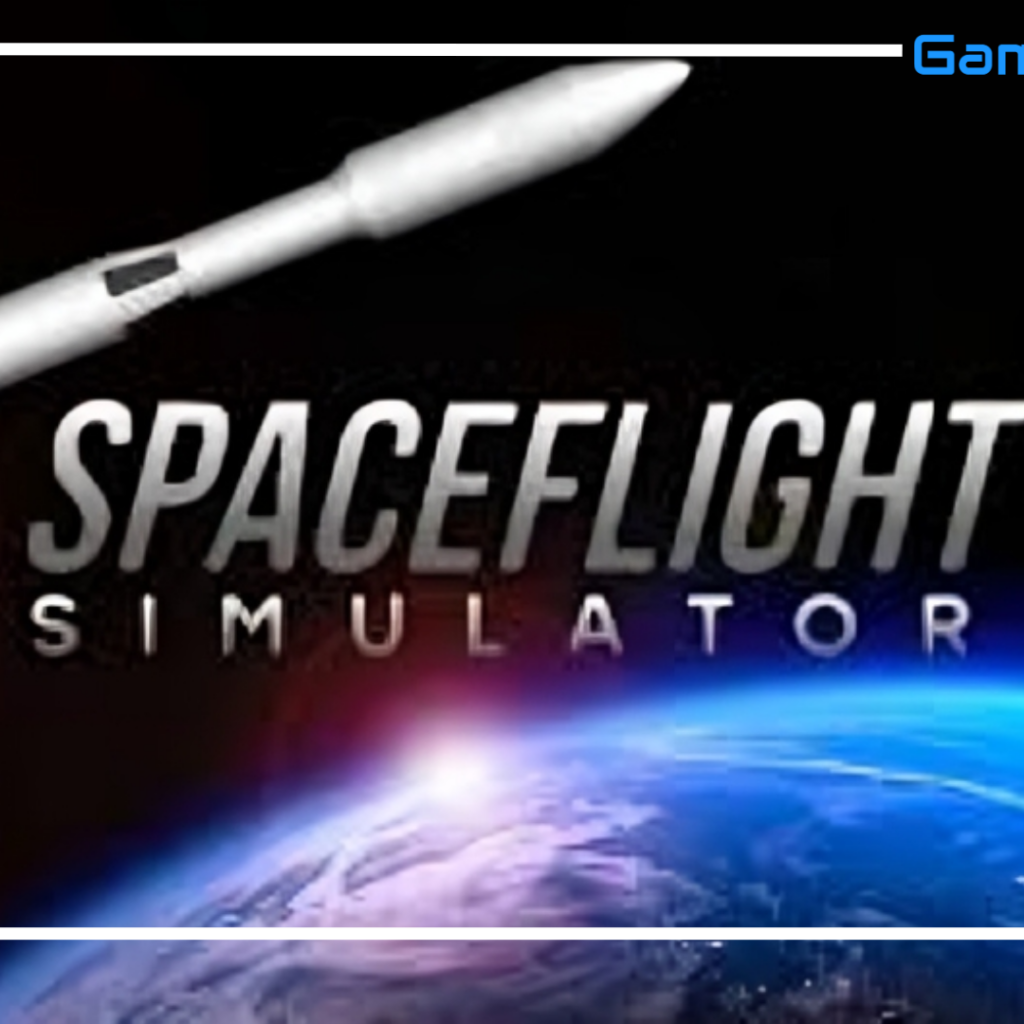Spaceflight Simulator is a sandbox game that allows you to explore the intricacies of rocket science and space exploration. Whether you’re a novice rocket builder or an aspiring space engineer, understanding rocket design principles is essential for success. This ultimate guide delves into the fundamentals of building the perfect rocket, covering crucial aspects like weight distribution, fuel efficiency, and design best practices. By the end of this guide, you’ll be well-equipped to create rockets that can conquer the stars.
Spaceflight Simulator PC Game Download
| Name | Spaceflight Simulator |
|---|---|
| Initial Release Date | 29 November 2017 |
| Platforms |
Nintendo Switch, Android, iOS, Microsoft Windows, Linux, macOS, Mac operating systems
|
| Developer | Team Curiosity , Moroyna Limited |
| Publisher | Team Curiosity , Moroyna Limited |
| Engine | Unity |
| Genres |
Space flight simulation game, Simulation Game, Indie game, Vehicle simulation game
|
| Category | PC Games >Simulation |
Understanding the Basics of Rocket Design
Understanding the fundamental elements of a rocket before delving into the details is crucial.:
- Command Module: The brain of your rocket, housing the pilot and instruments.
- Fuel Tanks: Store the fuel needed for your engines to function.
- Engines: Provide thrust to propel your rocket into space.
- Decouplers: Allow you to detach stages of your rocket when they’re no longer needed.
- Fins and Aerodynamics: Stabilize your rocket during flight.
These components work together to create a functional rocket. Still, the key to a perfect rocket is combining and optimizing these elements.
Mastering Weight Distribution
Remembering weight distribution is a fundamental element in rocket design is crucial. An improperly balanced rocket will need help to achieve stable flight, often leading to crashes or failed missions. Here’s how to master weight distribution:
- Center of Mass (CoM): This is where your rocket balances. To achieve stable flight, your CoM should be slightly ahead of the center of thrust. If the CoM is too far back, the rocket may become unstable and flip during ascent.
- Thrust Alignment: Ensure your engines align with the rocket’s CoM. Misaligned thrust can cause your rocket to veer off course. Use symmetry tools to ensure the even placement of engines and fuel tanks.
Unique Features Of Spaceflight Simulator
- Must Read – Say No! More PC Game Download Full Version

- Stage Design and Decouplers
- Staging: Rockets are typically divided into stages, each serving a specific purpose (e.g., initial launch, orbital insertion). Each stage should be designed to shed unnecessary weight after its function is complete. Use decouplers to separate stages cleanly.
- Upper Stages: The upper stages should be lighter and more fuel-efficient, primarily responsible for reaching orbit and maneuvering in space. Focus on reducing weight by using smaller engines and minimizing unnecessary components.

- Optimizing Fuel Efficiency
Fuel efficiency is vital for extending the range and capabilities of your rocket. An efficient rocket can reach further destinations with less fuel, allowing for more ambitious missions. Here’s how to optimize fuel efficiency:
- Engine Selection: Different engines are designed for different phases of flight. High-thrust engines are ideal for initial launch, while more efficient, low-thrust engines work better in the vacuum of space. Match the engine to the stage’s purpose for maximum efficiency.
- Specific Impulse (Isp): Isp measures an engine’s efficiency, with higher values indicating better performance. Prioritize engines with higher ISP for your upper stages, where fuel efficiency is critical.

- Managing Fuel Consumption
- Fuel Tank Placement: Position fuel tanks close to the CoM to maintain balance as fuel is consumed. Uneven fuel consumption can shift the CoM, destabilizing the rocket.
- Throttle Control: During ascent, adjust your throttle to maintain an efficient trajectory. Full throttle is only sometimes necessary; reducing throttle during less demanding phases can save fuel.
- Gravity Turn: Initiating a gravity turn during ascent can significantly improve fuel efficiency. By gradually tilting your rocket towards the horizon, you reduce the need for horizontal burns later on, conserving fuel.

- Structural Integrity and Stability
- Struts and Reinforcements: Use struts to reinforce connections between different parts of your rocket, preventing wobbling or collapsing under stress. This is especially important for larger rockets with multiple stages.
- Symmetry: Build your rocket with symmetry in mind. Asymmetrical designs can cause uneven weight distribution, leading to instability during flight.

- Simulations and Test Launches
- Simulate First: Before launching, simulate your rocket’s trajectory. Simulations help you identify potential issues without wasting resources on a failed mission.
- Test in Phases: Conduct test flights for each stage of your rocket, starting with the initial launch. Pay attention to how each stage performs and make adjustments as needed.
- Analyze Failures: If a test fails, analyze what went wrong. Was it a balance issue? Did the rocket run out of fuel too early? Use this information to make improvements.

- Refining the Design
- Adjust and Improve: Adjust your rocket’s design based on your test results. This might involve tweaking the engine placement, adjusting fuel tank sizes, or adding more fins for stability.
- Incremental Changes: Make small, incremental changes rather than overhauling the entire design simultaneously. This approach makes it easier to pinpoint what works and what doesn’t.
Conclusion
Building the perfect rocket in Spaceflight Simulator is a rewarding challenge that requires careful planning, testing, and iteration. By mastering weight distribution, optimizing fuel efficiency, and adhering to design best practices, you can create rockets capable of reaching the farthest corners of the solar system. Remember, success in rocketry comes from learning from your failures, refining your designs, and always striving for improvement. So, gear up, pilot, and reach for the stars!
- Must Read – ROUNDS Download Free PC Game Full Version
How To Download Spaceflight Simulator PC Instructions
- Step 1: Click On Download Button,You will be redirected to our download page
- Step 2: Click On Download Spaceflight Simulator PC Button
- Step 3: Your Download Will Start Free Installer Officially Created From GamingBeasts.com
- Step 4: Download & Install The File & Then You Will Be Able To Install The Game
- Step 5: With Good Internet Connection, It Will Be Easy To Download The Game
- Step 6: After Completing The Installation You Can Enjoy Spaceflight Simulator PC For free
If you still face any problems or want to report any bugs please contact me.
Spaceflight Simulator – Minimum System Requirement
- Requires a 64-bit processor and operating system
- OS : Windows 7 or Newer
- Processor: 2.4 GHz Dual core
- Memory: 2 GB RAM
- Graphics: Integrated Graphics (512MB)
- Storage: 1 GB available space
Spaceflight Simulator – Recommended System Requirement
- Requires a 64-bit processor and operating system
- OS : Windows 7 or Newer
- Processor: 2.5+ GHz Quad core
- Memory: 4 GB RAM
- Graphics: NVIDIA GTX 660 or Better, ATI 7950 or Better
- Storage: 1 GB available space
FAQs
How do I ensure my rocket flies straight and doesn’t flip during launch?
To keep your rocket stable during launch, focus on proper weight distribution. The Center of Mass (CoM) should be slightly ahead of the Center of Thrust, and your engines should be aligned with the CoM. Adding fins to the lower part of your rocket can also improve stability, especially during atmospheric flight.
What is the purpose of staging in rocket design?
Staging allows you to shed unnecessary weight as your rocket ascends. By dropping empty fuel tanks and engines, you reduce the mass your rocket needs to carry, improving fuel efficiency and performance. Staging is crucial for reaching orbit and beyond.
How do I choose the suitable engines for my rocket?
Choose engines based on the phase of flight. High-thrust engines are best for the initial launch when you must overcome gravity and atmospheric drag. For the upper stages, use engines with higher Specific Impulse (Isp) for better fuel efficiency in space.

This download is 100% Free and Hosted on the Fastest Cloud Server.

